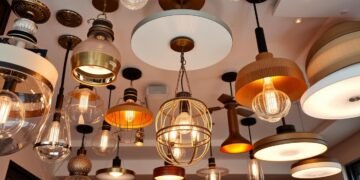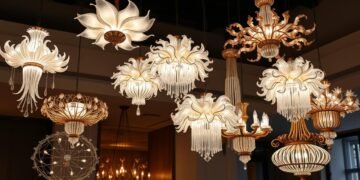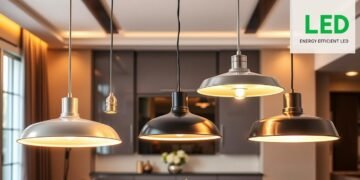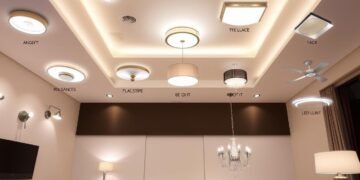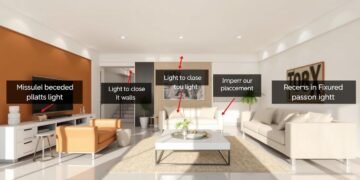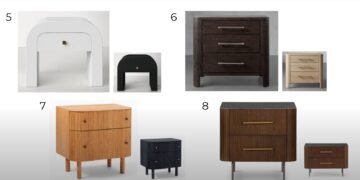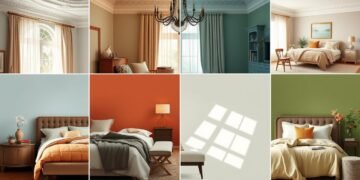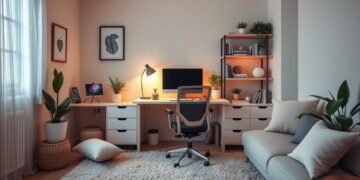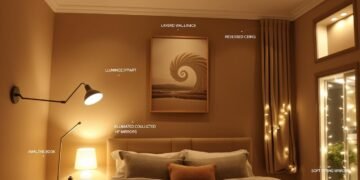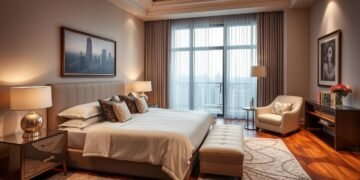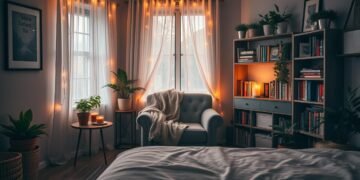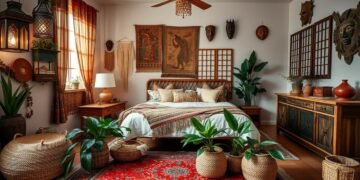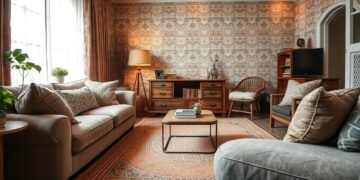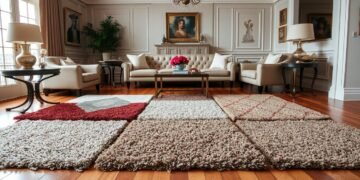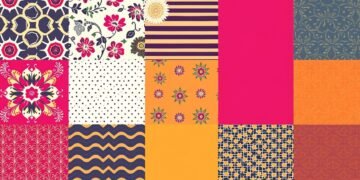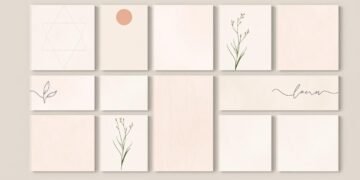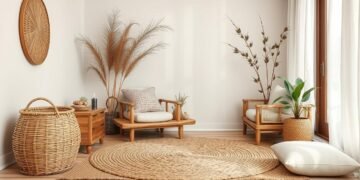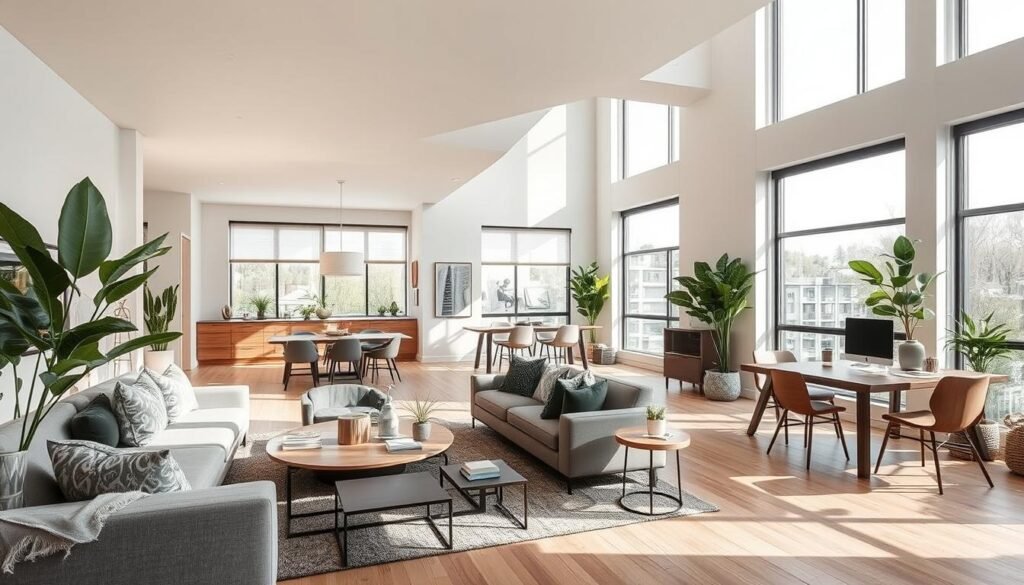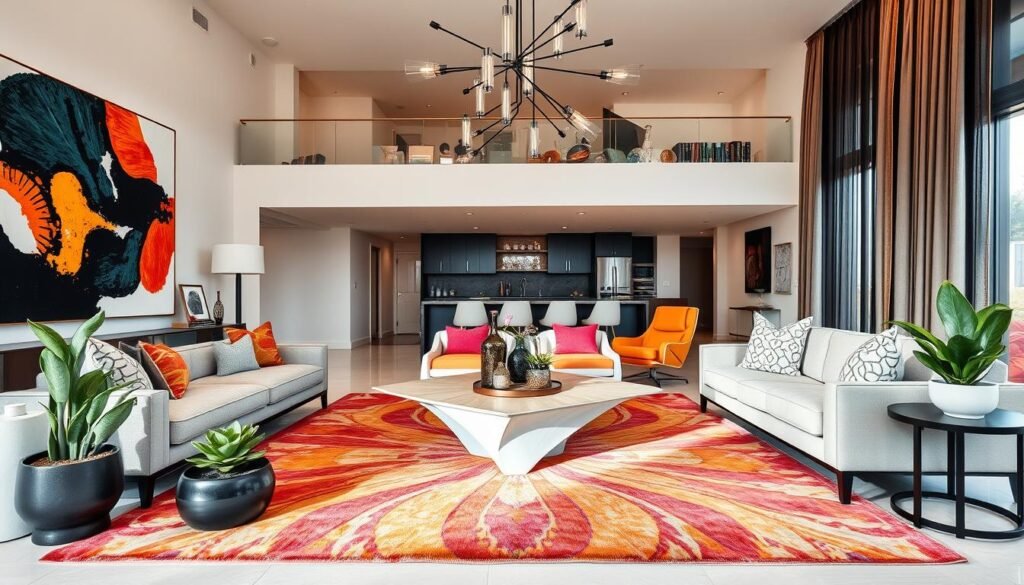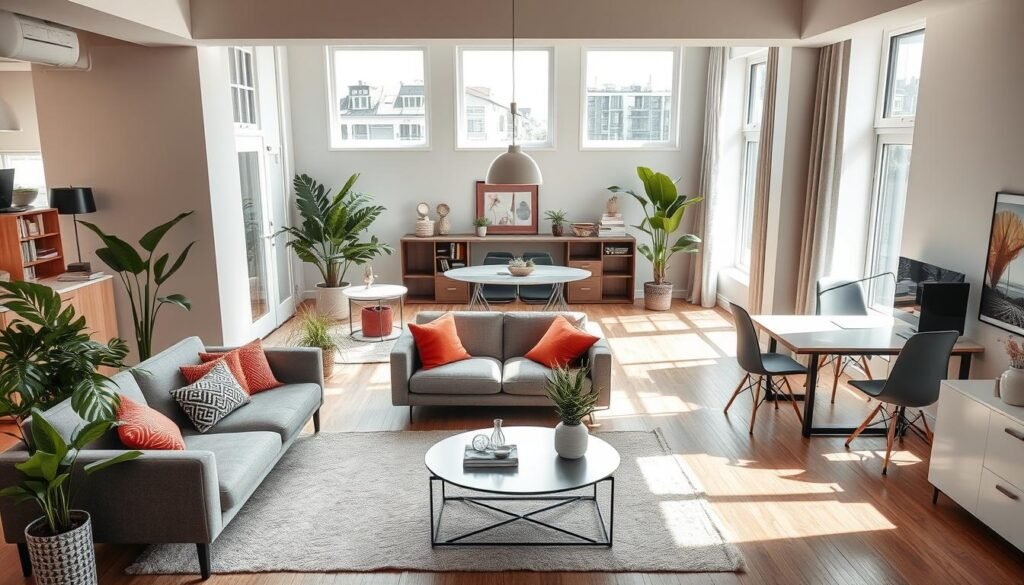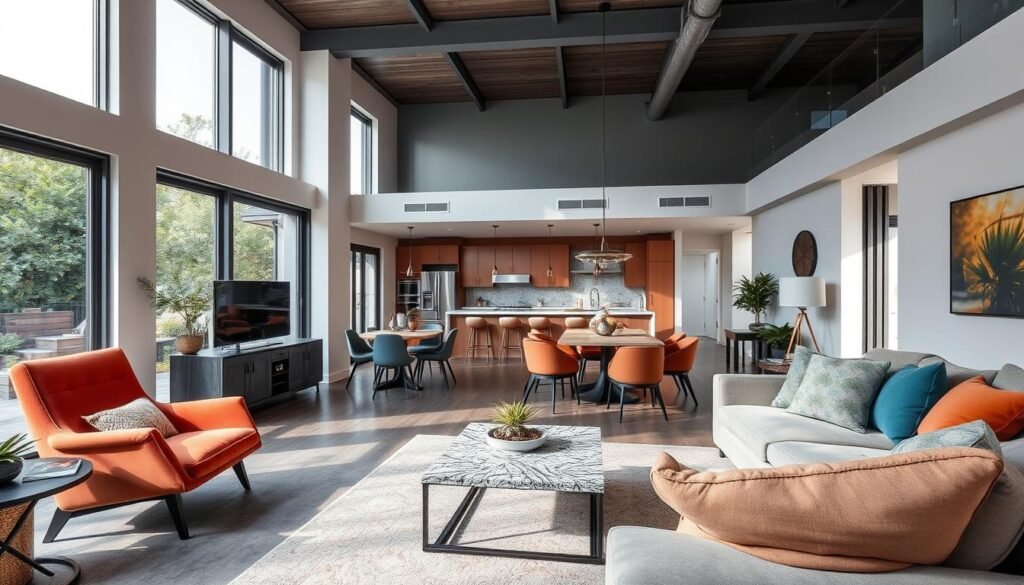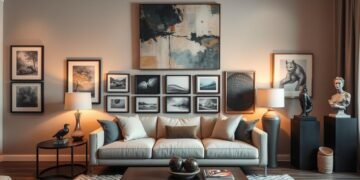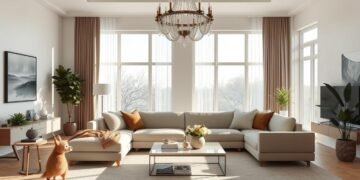Are you having trouble making an open-concept space look good with many focal points? You’re not alone. Designing these big, open areas is tricky. It needs a careful mix of different design parts. But don’t worry – with the right tips, you can make your open space look great.
Get ready to learn how to handle many focal points and improve your interior design skills.
Table of Contents
- 1 Understanding the Challenge of Open Spaces and Multiple Focus Areas
- 1.1 The Evolution of Open-Concept Living
- 1.2 Relatedarticles
- 1.3 8 Approaches to Choosing the Perfect Focal Point for Any Room
- 1.4 7 Rules for Placing Artwork at the Right Height and Scale
- 1.5 5 Common Scale Mistakes and How to Correct Them
- 1.6 Common Design Challenges in Large Spaces
- 1.7 Impact of Multiple Focal Points on Room Flow
- 2 Creating Distinct Zones Without Compromising Openness
- 3 The Art of Balancing Multiple Focal Points
- 4 Strategic Furniture Placement and Space Planning
- 5 Using Color and Texture to Define Focal Areas
- 6 Lighting Design for Multiple Focus Points
- 7 Natural and Architectural Features as Anchors
- 8 Incorporating Art and Decorative Elements
- 9 Flow and Movement Between Focal Points
- 10 Storage Solutions and Clutter Management
- 11 Conclusion
- 12 FAQ
- 12.1 What are the key challenges in balancing multiple focal points in open-concept spaces?
- 12.2 How can you create distinct zones in an open-concept space without compromising the open feel?
- 12.3 What techniques can be used to balance the visual weight of multiple focal points?
- 12.4 How can color and texture be used to define focal areas within an open-concept space?
- 12.5 What is the importance of lighting in an open-concept space with multiple focal points?
- 12.6 How can natural and architectural features be used as anchors in an open-concept design?
- 12.7 What role do art and decorative elements play in balancing multiple focal points?
- 12.8 How can you optimize traffic patterns to ensure smooth flow between focal points?
- 12.9 What storage solutions are effective in maintaining the aesthetic of an open-concept space?
- 13 Source Links
Key Takeaways
- Understand the evolution of open-concept living and common design challenges
- Discover techniques to create distinct zones without compromising openness
- Learn how to balance visual weight and maintain harmony between design elements
- Optimize furniture placement and space planning for seamless flow
- Utilize color, texture, and lighting to define and highlight focal areas
Understanding the Challenge of Open Spaces and Multiple Focus Areas
Open-concept living has changed how we design and enjoy our homes. It brings a sense of connection and flow between different areas. Yet, it also comes with design challenges.
Designers must keep the structure strong while removing walls. They need to balance natural light and create clear zones without traditional walls. This requires a careful and thoughtful approach.
The Evolution of Open-Concept Living
Open-concept living has become popular in recent years. People want more visual hierarchy, better room functionality, and a smooth flow between color balance, decorative accents, and furniture arrangement. This design has changed how we see and use our living spaces, making them more open and connected.
Common Design Challenges in Large Spaces
Designers face challenges in making large, open spaces look good and work well. They need to balance the structure with a cohesive design. Managing natural light and ensuring each area works well is also a big task.
Impact of Multiple Focal Points on Room Flow
Having many focal points in an open space can affect how we move and arrange furniture. It’s important to think about where these points are and how they fit together. Designers aim to create a space that feels smooth and natural, where each focal point is highlighted without overwhelming the room.
| Design Challenge | Potential Impact |
|---|---|
| Maintaining Structural Integrity | Difficulties in balancing open space and architectural needs |
| Balancing Natural Light | Uneven distribution of light, creating dark or overly-lit areas |
| Creating Distinct Functional Zones | Lack of visual separation and purpose-driven design |
| Managing Multiple Focal Points | Disruption in room flow and visual hierarchy |
Creating Distinct Zones Without Compromising Openness
Designing an open-concept space needs careful thought. It’s about making different areas without losing the open feel. You can do this with smart furniture, area rugs, and ceiling designs.
A design-build studio knows how to make every detail work together. They use big windows, skylights, and glass doors to improve the space. Having the same floor everywhere makes the area feel bigger and more connected.
Turning a house into an open-concept space changes how air moves and how it’s cooled. Design-build teams move electrical and plumbing lines smoothly. They make sure everything works well together.
Lighting is key in open-concept spaces. Using ambient, task, and accent lighting makes a big difference. Adding things like rugs and acoustic panels helps keep the space quiet.
Custom cabinets and floating shelves are great for keeping things tidy. They look good and help keep the space organized. This makes the whole area look better together.
“Thoughtful placement of elements like large windows, skylights, and glass doors can enhance the overall atmosphere in open-concept living spaces.”
Designers use art and accessories, architectural features, and smart lighting as a focal point to create special areas. They choose centerpieces and think about scale and proportion to make the space look even better.
The Art of Balancing Multiple Focal Points
Creating a beautiful interior design in open-concept spaces is all about balance. It’s not about letting everything fight for attention. Instead, use smart strategies to make your design look cohesive and meaningful. By knowing how to distribute visual weight, manage scale and proportion, and keep harmony, you can make your space stand out and reflect your style.
Visual Weight Distribution Techniques
Symmetrical balance is a timeless choice that grabs attention, often seen in packaging and logos. Asymmetrical balance adds a lively feel by focusing on specific points. For a bold statement, try off-balance or discordant balance to create a sense of tension. Mosaic or crystallographic balance balances chaotic elements in a way that’s both interesting and balanced.
Maintaining Harmony Between Elements
When you have many focal points, keeping everything cohesive is key. The biggest contrast between light and dark areas grabs the eye. Adding a unique shape, like a circle among squares, also makes a big impact. Using different textures and colors can make your design even more engaging and balanced.
Scale and Proportion Considerations
The size and where you place your design elements are critical for a smooth visual flow. A small shape among bigger ones quickly becomes the focus. Using the golden ratio or isolating elements can help find the most striking points in your space. Understanding scale and proportion is essential to creating a design that truly captivates.
“Balancing multiple focal points is an art form that requires a deep understanding of visual weight, harmony, and intentional design choices. By mastering these principles, you can create spaces that captivate and inspire.”
Strategic Furniture Placement and Space Planning
Furniture arrangement is key to keeping open-concept spaces looking good and working well. It’s about balancing big and small items, dividing areas, and making the most of room zoning and design.
Pick furniture that fits the space’s flow and shows off its openness. Choose items that can do more than one thing to make the space versatile. Make sure there’s enough room (about 75cm) around furniture for easy moving around.
- Measure the room and furniture sizes carefully to avoid too much stuff.
- Put furniture around the main focus to improve the room’s look.
- Use furniture of different sizes to add depth and interest.
- Use pieces like sofa beds in small rooms to save space.
- Move furniture away from walls to make the space feel cozier and more inviting.
Avoid mistakes like pushing all furniture against walls or ignoring the size and shape of pieces. Good furniture placement can turn your living areas into cozy, useful, and beautiful spots. It makes everyone who lives there happier and more comfortable.
| Furniture Placement Considerations | Benefits |
|---|---|
| Arranging furniture around the focal point | Enhances the room’s design and highlights key features |
| Leaving ample space around furniture | Promotes easy navigation and a sense of openness |
| Mixing different furniture sizes | Adds depth and visual interest to the space |
| Using multi-functional furniture | Maximizes functionality and saves space |
| Floating furniture away from walls | Creates a more intimate and engaging environment |
By carefully placing your furniture and planning your space, you can balance big and small items. You can also divide spaces well, improve room zoning, and make your open-concept living areas more functional and beautiful.
Using Color and Texture to Define Focal Areas
In open-concept spaces, color and texture play a big role. They help create clear focal areas. A consistent color scheme with accent colors can mark different zones. Textures like wall finishes, cabinetry, and soft furnishings add depth and interest, making each area stand out.
Color Coordination Strategies
Choosing colors for your open-concept space is key. Start with a neutral base like white, beige, or gray. Then, add accent colors to tie everything together. This way, your furniture focal points and multiple art pieces blend well, yet each area remains unique.
Textural Elements for Visual Interest
Different textures can really make your space pop. Try textured wallpaper, stone, or wood paneling for focal points. Add lighting fixtures and sculptural elements to make these points even more striking.
Material Selection and Consistency
Keep your materials consistent to define areas in an open-concept space. You can mix things up a bit for interest, but keep the overall look cohesive. Using the same wood tone for furniture and cabinetry, or matching stone or tile, helps create a unified look.
“Focal points are key in shaping a room’s look and feel. They provide balance and direction for the eye.”
Lighting Design for Multiple Focus Points
In open-concept spaces, smart lighting design is key. It balances multiple focal points and makes the space look good. Using a layered lighting approach helps light different areas well, keeping the space open and flowing.
Begin with a strong ambient lighting base. Use recessed ceiling lights or wall sconces for a uniform glow. This base light makes room for task lighting and accent lighting to shine.
Task lighting, like pendant lights over a kitchen island or floor lamps in a reading area, marks specific zones. It lights up main areas, making the space more functional.
Accent lighting, though, highlights secondary points like architectural features or artwork. It uses spotlights, picture lights, or uplighting to add depth and interest.
Mixing these lighting types creates a balanced and symmetrical design. It guides the eye smoothly through the space. Paying attention to proportions in design and focal point placement makes the lighting enhance the space’s look and function.
“Proper lighting positioning is essential for safety as inadequate lighting can impair visibility, increasing the risk of accidents and damage to stage equipment and props.”
The goal in open-concept spaces is a unified and attractive look. Each focal point should be highlighted and fit well with the design. Achieving this balance improves both the look and use of your open-concept living area.
Natural and Architectural Features as Anchors
Designers use natural and architectural features as anchors in open spaces. These elements act as visual focal points. They guide the eye and bring order to the space.
By using existing architectural details or adding new ones, you can create zones. This keeps the room open while defining areas.
Incorporating Existing Architectural Elements
Look for architectural features to be your design’s focal point. Fireplaces, large windows, or statement beams can instantly draw the eye. They serve as natural anchors.
By arranging furniture and decor around these elements, you create a balanced flow. This makes the room cohesive and visually appealing.
Window Treatments and Views
Windows are powerful focal points in open spaces. Thoughtful window treatments, like dramatic curtains or shades, frame the view. They enhance its visual impact.
Also, consider the view outside the windows. Landscapes or cityscapes can be captivating. They connect the indoor and outdoor spaces.
Creating New Architectural Features
If your space lacks architectural elements, add new ones. This could be beams, arches, or custom built-ins. They define zones within the room.
These design elements add visual interest. They make the layout intentional and visually appealing.
Using natural and architectural features as anchors balances open spaces. By incorporating existing elements or adding new ones, you create harmony. This makes the space visually appealing and guides the eye.
Incorporating Art and Decorative Elements
Art and decorative pieces are key to balancing your open-concept space. By adding large artwork, sculptural elements, and decorative items, you can make your room look great. This prevents it from feeling too busy.
When picking art, think about where it will go and how big it is. Art should take up most of the wall space above furniture. This makes it feel grounded and balanced.
Lighting is also important for your artwork. Use track lights, wall lights, or picture lights to highlight it. Make sure the art’s center is at eye level, around 56 to 60 inches from the floor.
Match your decorative items with your artwork’s color and style. Don’t overdo it with too many accessories. A few well-chosen items can make a big difference.
The aim is to have a space that feels balanced and thoughtful, with your art as the main attraction. By following these tips, you can make your open-concept space look great.
Flow and Movement Between Focal Points
Creating a beautiful open-concept space means thinking about how people move and see things. It’s about making sure the flow is smooth and the look is great. This way, your space will feel open and look amazing.
Traffic Pattern Optimization
Think about where people will walk in your open layout. Place furniture and decor to guide them well. Make sure paths are clear and lead the eye to each focus point.
Placing big items like seating and tables can help guide movement. This makes moving around easy and natural.
Visual Connection Methods
Link your focus points with design elements like color and texture. Use shapes and lines to guide the eye. This makes the space feel connected and smooth.
Transitional Space Design
The areas between focus points are key to a good flow. Use colors, textures, and furniture that match the rest of the space. Make sure these areas are balanced and look good with the rest.
By planning traffic, creating visual links, and designing transitional areas well, you get a space that looks and feels great. It’s both beautiful and functional.
| Traffic Pattern Optimization | Visual Connection Methods | Transitional Space Design |
|---|---|---|
|
|
|
“The ideal visual hierarchy in design should match the conceptual hierarchy of the content, guiding visitors to scan information quickly and efficiently.”
By balancing focal points and arranging furniture well, you can make a stunning and useful space. This approach makes your open-concept area both beautiful and practical.
Storage Solutions and Clutter Management
To keep your open-concept space tidy and attractive, you need smart storage. Use custom cabinets, floating shelves, and furniture with secret spots. This way, you get lots of storage without messing up the room’s look. It keeps things neat and stylish.
First, figure out how much clutter you can handle. Studies show 70% of people get stressed by too much stuff at home. Knowing how long it takes to clean up helps you see where you can tidy up more.
The Four-Box Method is a great way to declutter. It helps you sort items into ‘keep’, ‘donate’, ‘recycle’, and ‘trash’ boxes. This method makes cleaning up 50% faster. Plus, sorting by type, not room, can lead to 30% more donations.
| Storage Solution | Benefit |
|---|---|
| Custom Cabinetry | Maximizes storage while maintaining a cohesive design |
| Floating Shelves | Provides display and storage space without taking up floor area |
| Multi-use Furniture | Offers hidden compartments for discreet storage |
| Modular Closet Systems | Creates up to three times more storage than typical wire shelving |
| Garage Storage Systems | Maximizes underutilized space for additional storage |
Embracing minimalism and choosing the right storage helps keep your space neat. This way, your using art as multiple focal points in a room, balancing visual weight between focal points, and multiple focal points in large rooms design stays beautiful and organized.
Conclusion
Balancing multiple focal points in open-concept spaces is a delicate art. It requires careful planning and execution. By understanding the challenges of open spaces, you can create distinct zones without losing openness.
Strategically placing furniture and design elements is key. This helps achieve a harmonious and functional living environment. Color, texture, and lighting play a big role in defining focal areas and maintaining balance.
Incorporating natural and architectural features as anchors is important. Thoughtful art and decorative pieces can also elevate the aesthetic. Remember, the key to success lies in optimizing flow and movement between focal points.
Effective storage solutions are also essential to manage clutter. By mastering these techniques, you can create a visually stunning and highly functional open-concept space. It will cater to your unique lifestyle and preferences.
FAQ
What are the key challenges in balancing multiple focal points in open-concept spaces?
How can you create distinct zones in an open-concept space without compromising the open feel?
What techniques can be used to balance the visual weight of multiple focal points?
How can color and texture be used to define focal areas within an open-concept space?
What is the importance of lighting in an open-concept space with multiple focal points?
How can natural and architectural features be used as anchors in an open-concept design?
What role do art and decorative elements play in balancing multiple focal points?
How can you optimize traffic patterns to ensure smooth flow between focal points?
What storage solutions are effective in maintaining the aesthetic of an open-concept space?
Source Links
- The Interior Design Institute
- 6 Simple Steps to Achieve the Best Furniture Layout
- How to Deal with Two Focal Points in a Living Room
- How can you balance open and closed spaces in your space plan?
- The Ultimate Guide to Transforming Cramped Spaces into Open-Concept Living
- What to Consider When Designing an Open Floor Plan
- The Principle of Balance in Design – Asymmetrical Balance in Graphic Design Principle – Graphically
- Brigham Young University-Idaho ART 110
- Focal Point in Art | Learn to Paint Watercolor
- The Interior Design Institute
- Discover practical tips, common mistakes, and expert advice on furniture arrangement to enhance your home’s aesthetics and functionality
- Creating Focal Points in Your Room with Paint | Custom Painting, Inc.
- Creating a focal point in textured art – Kore Sage | Mixed Media Artist
- The Importance of Focal Points in Interior Design — SUKKHA INTERIOR DESIGN
- Lighting Positions – Illuminated Integration
- How to Create Focal Point Lighting for Your Home | Capitol Lighting 1800lighting.com
- The Role of Focal Points in Interior Design: Creating Visual Interest – KAD DESIGNSS
- How to Create a Focal Point in Interior Design
- How to Use Art as a Focal Point in a Room – Eden Gallery
- Mastering Design: The Art of Symmetry and Asymmetrical Balance — Abbeyfeale Interiors
- How can art and decorative elements enhance your commercial interior space?
- Design Principles: Dominance, Focal Points And Hierarchy
- Design Principles: Compositional Flow And Rhythm
- Clutter Threshold: How Much Clutter Can You Manage?
- 10 Expert Tips to Declutter Your Home | The Clutter Curator
- Control Your Clutter with Home Storage Solutions – Jeff Sheats Designs
- How to Write a Conclusion with Conclusion Paragraph Examples
- Creating and Incorporating Focal Points in Landscape Design – JCB Designscapes
